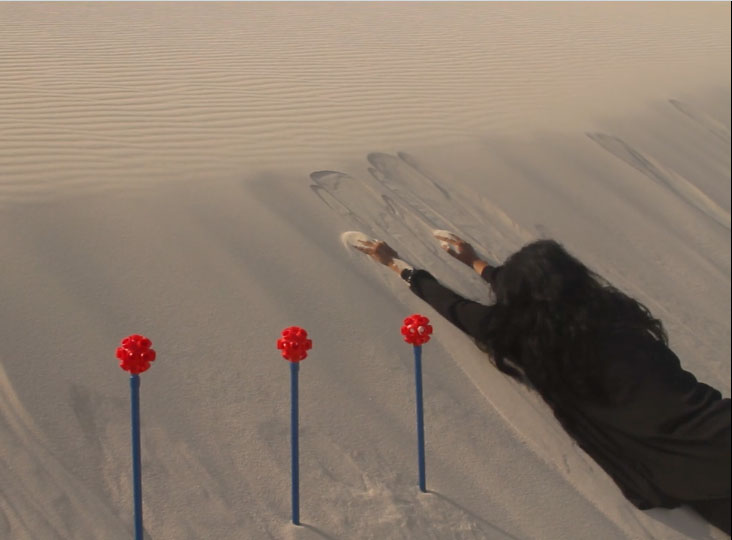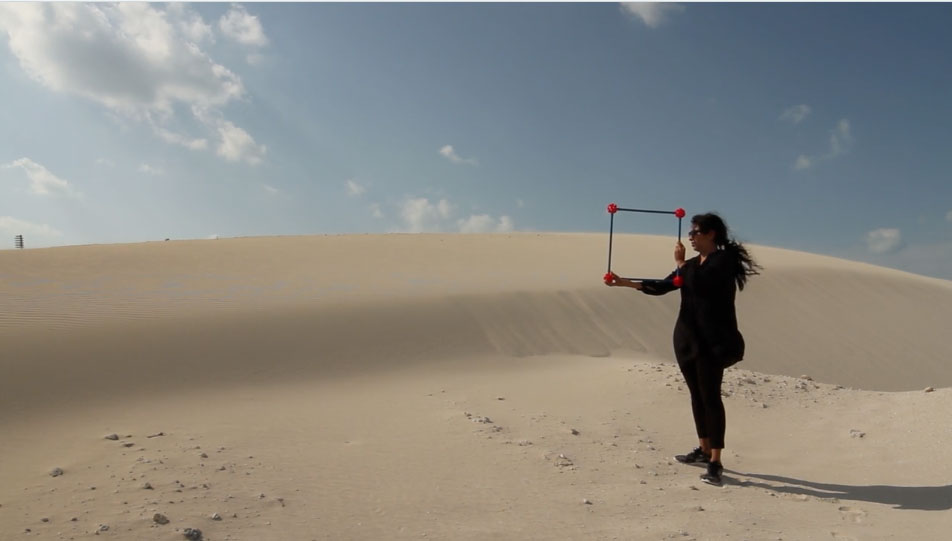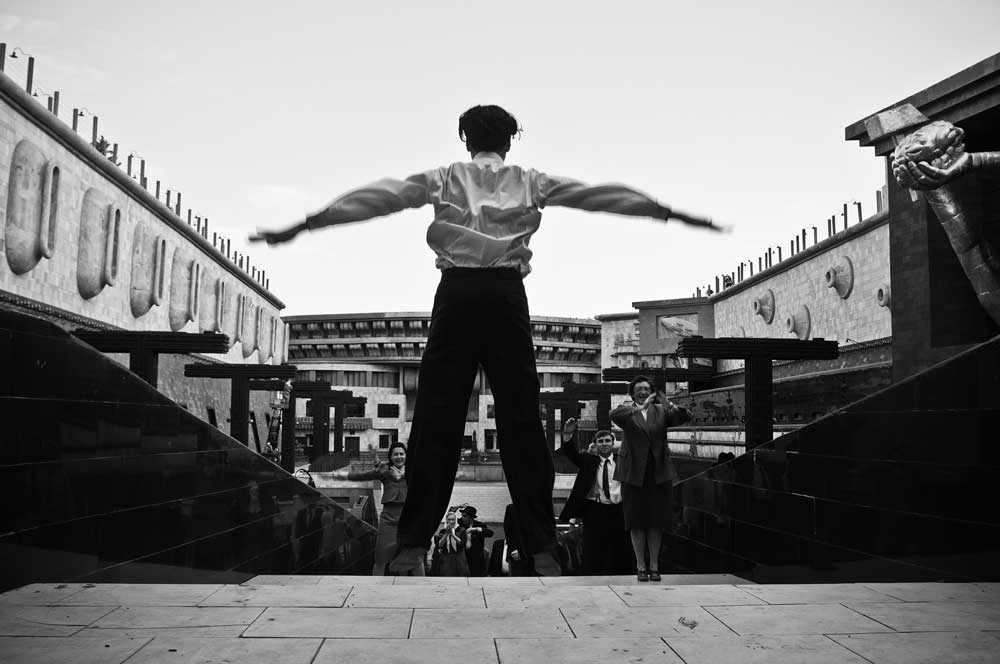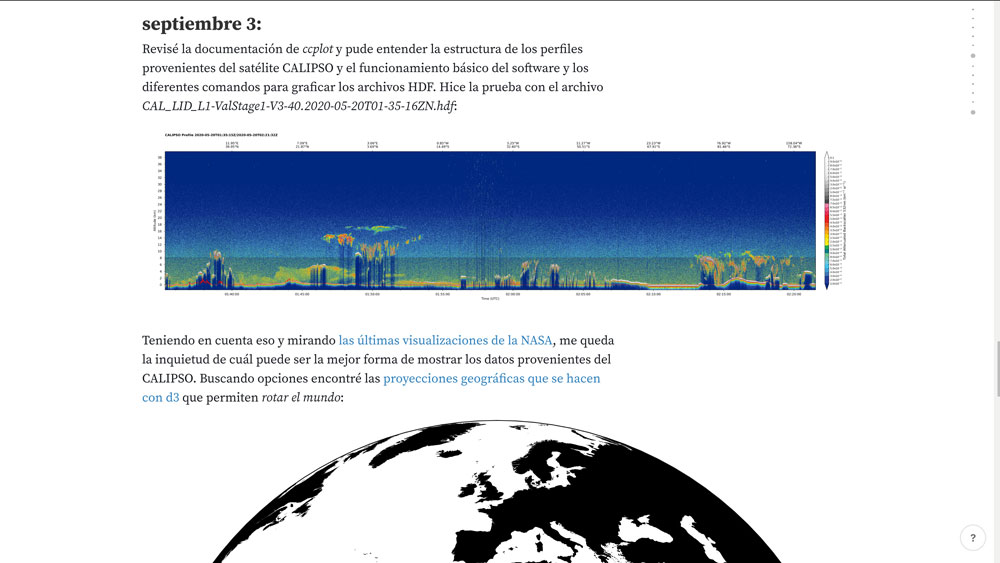chairs /
- prOphecy sun, Simon Fraser University
- Freya Zinovieff, Simon Fraser University
The impact of the COVID-19 pandemic on the cultural and social landscape has changed how we interact with, care for, witness, communicate, codify, and collaborate with one another. Decades of cultural ways of being are dismantled and evolving, placing artists in unique positions to navigate this new paradigm. However, as the pandemic highlights systemic inequalities, issues of race, gender, and privilege are definitive. This session invites papers, creative and unconventional approaches that reimagine the current state of online production, representation, and exhibition asking:
- What is the tension between dystopian pre-COVID Capitalism and potential new futures and can these existing hierarchies be broken down to transform and unsettle the arts and humanities?
- How are technologies being employed to track and surveil, and how can we mitigate and care for one another in this new paradigm?
- How have online residencies, exhibitions, and performances challenged or co-opted research- creation formats, and how can privilege be addressed?
prOphecy sun is an interdisciplinary performance artist, movement, video, sound maker, mother, and Ph.D. Candidate at Simon Fraser University. Her practice celebrates both conscious and unconscious moments and the vulnerable spaces of the in-between in which art, performance, and life overlap. Her recent research has focused on ecofeminist perspectives, co-composing with voice, objects, surveillance technologies, and site-specific engagements along the Columbia Basin region and beyond. She performs and exhibits regularly in local, national, and international settings, music festivals, conferences, and galleries and has authored several peer-reviewed articles, book chapters, and journal publications.
Freya Zinovieff is an artist and Ph.D. student at the School of Interactive Arts and Technology at Simon Fraser University, Canada. Her research looks at the entanglements between technologies, species, and the Earth System, specifically in Borderlands, through the creation of Speculative Sonic Fictions; ethnographies that illuminate the boundaries between the political, the biological, and the ecological.

Amanda Guiterrez, Collaborative distance, in search of emotional survival, 2020, video still

Amanda Guiterrez, Collaborative distance, in search of emotional survival, 2020, video still
E.8.1 Collaborative Distance, In Search of Emotional Survival
Amanda Gutierrez, Concordia University
The paper Collaborative distance, in search of emotional survival frames the author's experience as a woman, settling temporarily in Canada, the United Arab Emirates and Finland, amid the COVID-19 global border closures. Departing from a camera lens perspective, the essay approaches the experience of being under isolation and cultural alienation while staying stranded for indefinite time in the cities of Abu Dhabi and Helsinki waiting to return to Montreal. The paper essay highlights the artist's journey and her multiple artistic collaborators developed through online platforms as well as integrating experiences with local residents. The essay reflects upon concepts of emotional connection, migration, silence, walk, race, and feminism. The auto-ethnographic narrative departs from everyday observations of homeless and settlement to embrace the “new normal” and physical distance from family and friendships.
Amanda Gutierrez (b. 1978, Mexico City) explores the experience of home, belonging, and cultural identity by bringing into focus details of everyday practices whose ordinary status makes it particularly hard for us to notice their key role in defining who we are. Trained and graduated initially as a stage designer from The National School of Theater, Gutiérrez uses a range of media such as sound art and performance art to investigate how these conditions of everyday life set the stage for our experiences and in doing so shape our individual and collective identities. Approaching these questions from immigrants’ perspectives continues to be of special interest to Gutiérrez, who completed her MFA in Media and Performance Studies at the School of the Art Institute of Chicago and is currently elaborating the academic dimension of her work as a Ph.D. student at Concordia University, studying the field of the acoustic culture in urban studies. Gutiérrez has held numerous art residencies at FACT, Liverpool in the UK, ZKM in Germany, TAV in Taiwan, Bolit Art Center in Spain, and her work has been exhibited internationally in venues such as The Liverpool Biennale in 2012, Lower Manhattan Cultural Council. A recipient of a grant from the National System of Art Creators, in Mexico, Gutiérrez is currently one member of the Board of Directors of the World Listening Project.

Alexandre Zaezjev, New modes of viewership in a time of social atomization, 2020
E.8.2 New Modes of Viewership in a Time of Social Atomization: Exploring the Post-cinematic Universe of DAU
Alexandre Zaezjev, University of Geneva
Theorizing twenty-first century film, Denson and Leyda (2016) famously defined emerging forms of audiovisual culture as post-cinematic, emphasizing their “essentially digital, interactive, networked, ludic, miniaturized, mobile, social, processual, algorithmic” nature. With movie theatres closed and film festivals postponed, these post-cinematic media practices gradually become the “new normal.” Taking DAU (2020) by Russian director Ilya Khrzhanovsky as a case study of media exhibition in a time of social atomization, the present paper demonstrates how the Covid-19 pandemic challenges traditional hierarchies of film distribution and fosters the expansion of new, more egalitarian ways of engaging with visual culture.
In 2009, Khrzhanovsky staged an immersive cinematic experiment, dubbed by journalists as the “the most insane film shoot of all time.” He invited contemporary artists, musicians, Nobel Prize winning scientists and leading intellectuals from all over the world to spend weeks, months and sometimes years on a closed film set, improvising the lives of their characters. The final product of this unconventional filming experience are 700 hours of footage, 500 000 photographs, 14 feature films and a mini-series. Following the world premiere in Paris in 2019, two DAU feature films were presented in February 2020 at the Berlinale and won an award “for Outstanding Artistic Contribution.” As it became evident that the remaining DAU films will not be screened at international film festivals due to the pandemic, Khrzhanovsky decided to release all of the processed footage on an online media platform “DAU Digital.” Described in the official trailer as a “virtual place for people to come together,” it functions akin to an interactive media archive. Analyzing DAU as a full-fledged post-cinematic experience, the present paper demonstrates how Khrzhanovsky uses the global lockdown to explore new, digitally mediated modes of assembly, intimacy, and expression. “The first project about isolation, filmed in isolation, for people in isolation,” is how the author himself describes his magnum opus.
Alexandre Zaezjev is a PhD Candidate at the University of Geneva, Switzerland. His doctoral thesis focuses on postmodern creative practices, and namely the role of digital media in the emergence of participatory visual culture. His research considers the debate between modernism and postmodernism by examining the arrival of Web 2.0 and the decentralizing effect that it had on artistic agency, its contribution to de-institutionalization and de-hierarchization of art, as well as its role in the progressive displacement of mass culture of consumption by the mass culture of production. Alexandre has an extensive experience in public speaking both in Europe and in North America. He presented his research at international conferences and as a guest lecturer at McGill University (ARTH 422 – Selected Topics in Art History, Fall 2019). Combining academic research with creative practice, he is also an independent multimedia artist currently based in Montreal.

Annalisa Raho, Making Connections: Rethinking the Agency of Design, LE magnifique FUTUR 2020
E.8.3 Rethinking the Agency of Design in the Age of Covid-19
Annalisa Raho, Luther College; University of Regina
Covid-19 has changed the intimate perception of the world around us, and is affecting our relations within and outside our personal and professional environments. Such relations lay at the core of my current work. As a designer, my practice is often aimed at making connections among people, and that has become a major challenge in my practice. As a designer interested in social change, my work has a specific agency, directed to make my audience reflect on their behaviour: Covid-19 demands that designers take action. Connection is the missing link; connection is what these days are stealing from us; connection, now more than ever, has become more palpable through its absence; and connection is what my recent practice is trying to reshape, both through content and strategies to disseminate my work.
This presentation is an opportunity to show the graphic work I am making on Covid-19 and discuss the strategies I have adopted to create, develop, distribute, disseminate, re-elaborate my work. Following two streams – one public and one personal – my current projects deliver information about the virus and make them accessible to the public. Showing the different aspects of the virus in an accessible way changes people’s approach to it, and possibly also people’s reactions and actions. Communication through personal experience, on the other hand, takes us all back to our human condition. By documenting how isolation has changed my family life, I offer an example to others: we are all facing similar problems. Moreover, by showing my work mostly through on-line exhibitions, I am actually reaching a wider, multicultural, and global audience. It could be argued that Covid-19 is offering an opportunity to establish connections on an unprecedented scale. However, the very essence of my work problematizes such virtual networks, as I will show by discussing my practice.
Annalisa Raho is an architect, visual communication artist and researcher whose work explores dynamics and strategies of design practice and theory. Her work on data visualization has been exhibited in national and international art festivals and design communities’ events. After collaborating with the J.Paul Getty Museum in Los Angeles (2011-2012), Annalisa moved to Canada and since 2015 she is a Sessional Lecturer of Graphic Design and Visual Communication at Luther College, University of Regina, where she has developed a whole suite of courses in Visual Communication, Branding, and Advertising. Annalisa is currently pursuing a practice-based PhD in Interdisciplinary Studies at the University of Regina, where she explores interventions in design for social change through a variety of media and communication platforms.

Andrés Burbano and Pierre Puente, Near Space Initiative, 2020, screenshot
E.8.4 Near Space Initiative
- Andrés Burbano, Universidad de los Andes (Columbia)
- Pierre Puentes, Universidad de los Andes (Columbia)
What theoretical benefit can the repositioning of Bogota, Colombia not as a city but as a sensitive, multi-dimensional membrane that transduces changes of the physical world into binary information provide? This project proposes that doing so can provide a synecdochic window on the Earth and the homeostasis it seeks in adapting dynamically to the forces of the cosmos. Recent events that inspire this exploration include a massive cloud of Saharan dust that transformed air quality in June 2020, the crash of a Loon Project high-altitude helium balloon in Central Colombia in March 2017, and the ongoing dynamics of the COVID-19 pandemic. The centrality of Bogota is an intentional nod to the ‘Bogota Declaration’ signed in 1976 by Equatorial countries declaring sovereignty over geostationary orbit above their territory. The larger remit of the work, though, is an inquiry into planetary phenomena. These include the new emissions and pollution of the Anthropocene as well as the deeply telluric, deep-time forces inherent to the planet. The proposed Near-Space Initiative focuses on the troposphere and stratosphere as extensions of Bogota and establishes three interlinked components:
- Lower Stratosphere Creative Research Center: We will design, implement, and launch a series of near-space experimental missions with weather balloons to explore the troposphere and lower stratosphere above Bogota.
- Surface and Upper Mantle Data Observatory: This portion of the initiative entails the identification, re-collection, documentation, and dissemination of public data sources from sensors monitoring Bogota.
- AI and Cosmopolitics Lab: The final, integrative outcome of the initiative is the creation of a series of computation experiments based on machine learning techniques. These will stochastically correlate the data of the Lower Stratosphere Creative Research Center and Surface and Upper Mantle Data Observatory.
Andrés Burbano is currently Associate Professor in the Department of Design at Universidad de los Andes, in Bogota, Colombia. Burbano holds a PhD in Media Arts and Technology from the University of California Santa Barbara, and is visiting professor at the Danube University in Krems, Austria. "Burbano, originally from Colombia, explores the interactions of science, art and technology in various capacities: as a researcher, as an individual artist and in collaborations with other artists and designers. Burbano's work ranges from documentary video (in both science and art), sound and telecommunication art to the exploration of algorithmic cinematic narratives. The broad spectrum of his work illustrates the importance, indeed the prevalence, of interdisciplinary collaborative work in the field of digital art."
Pierre Puentes graduated from Universidad de los Andes, is a designer with emphasis on interactive media, graphics and audiovisual production who seeks to relate music, image and the electronic reality in which we live with the aim of enriching and enhancing cultural production processes. His work understands design as an interdisciplinary, multimedia and curiosity-driven research.



